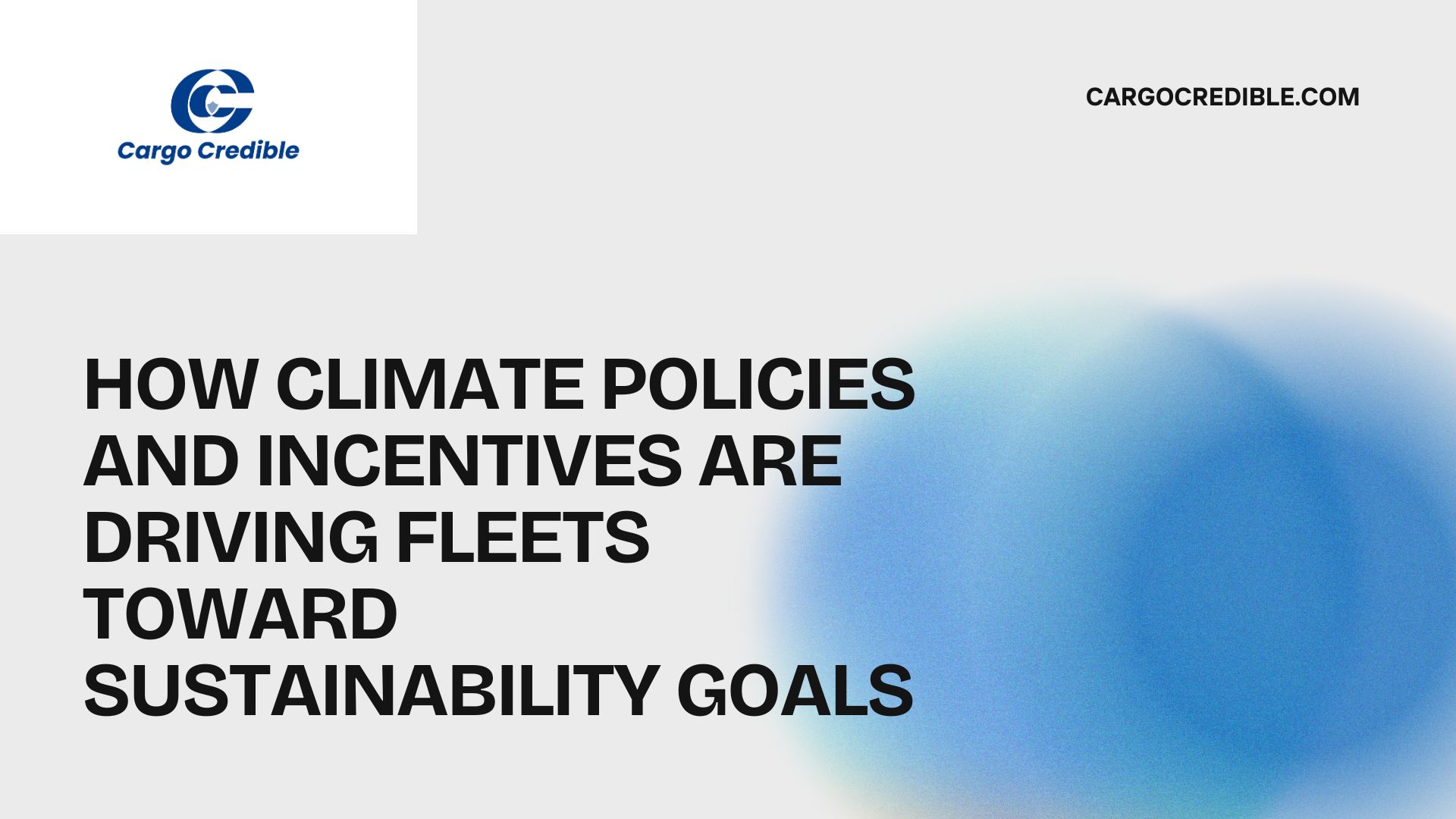How Climate Policies and Incentives Are Driving Fleets Toward Sustainability Goals

Transportation fleets play a critical role in the fight against climate change. Although trucks, buses, and delivery vans make up only about 10% of vehicles on the roads, they account for nearly 30% of all transportation-related emissions. Most of these fleets run on diesel, releasing carbon dioxide and toxic pollutants harmful to both human health and the environment. Consequently, governments, corporations, and nonprofits worldwide are launching a coordinated push to transform fleets from major polluters into climate heroes.
Why Fleets Matter in Climate Action
The scale of emissions caused by fleets places them squarely in the center of global climate efforts. Heavy-duty vehicles consume vast amounts of fossil fuels, contributing to the planet’s warming and associated extreme weather impacts. To address this, policymakers have implemented climate policies that function like traffic lights, guiding fleets through gradual but firm rules toward cleaner options.
Climate Policies: The Gentle Push
Emissions Standards
Governments have set stringent emissions limits on trucks and buses. For example, California’s Advanced Clean Fleets rule requires 100% of new trucks sold to be zero-emission vehicles (ZEVs) by 2036, while the EU aims for a 90% reduction in heavy-duty vehicle emissions by 2040. These rules drive manufacturers and fleet owners to accelerate the adoption of electric, hydrogen, and other low-emission trucks, ensuring compliance or facing penalties.
Fuel Economy Standards
Policies also mandate improved fuel efficiency, compelling fleets to use vehicles that travel farther on less fuel. As a result, fuel-efficient hybrids and electric models are becoming increasingly attractive.
ZEV Mandates
Certain regions require a growing percentage of vehicles to be zero-emission—meaning fleets must innovate and invest in electric and hydrogen-powered vehicles to stay competitive and compliant.
Incentives: The Carrots Everyone Wants
These policies are backed by robust incentive programs that make the switch to sustainable fleets attractive and viable.
- Tax Credits and Rebates: Programs like the U.S. Inflation Reduction Act offer tax credits up to $40,000 per clean commercial vehicle. Grants help cover EV charging infrastructure and workforce training.
- Grant Programs: Initiatives such as the NY Clean Truck Program provide grants covering up to 95% of costs to replace diesel trucks with zero-emission vehicles.
- Low-Interest Loans: Financing options ease upfront costs, with some programs offering loan forgiveness tied to carbon reductions.
- Access to Green Zones: Clean vehicles receive privileges like entry to restricted city zones, access to faster delivery routes, and special loading areas.
By removing financial risks and rewarding early adopters, incentives accelerate fleet transformation.
Workforce Evolution: The New Jobs and Skills
The transition to green fleets isn’t just about vehicles—it’s revolutionizing jobs and skill sets.
- Drivers are learning to operate electric and hydrogen vehicles.
- Technicians are retraining to service new propulsion and battery systems.
- Fleet managers are mastering data analytics and carbon footprint tracking.
This workforce shift is creating new career paths in clean logistics, energy, and technology sectors, fueling economic growth.
Market Dynamics: Business and Climate Alignment
The move toward sustainable fleets is no longer just a green initiative—it’s a vital business strategy. Embracing clean technology can reduce total cost of ownership by 20-30% by lowering fuel and maintenance expenses and helping avoid fines. It also attracts customers who prioritize climate responsibility.
According to the 2025 State of Sustainable Fleets report, early-adopter fleets increasingly integrate battery electric, hydrogen, and renewable fuels, leveraging over $13.5 billion in federal, state, and local funding. Transitioning fleets are creating significant market opportunities and innovation ecosystems around clean transportation tech.
Tangible Sustainability Progress
Industries like construction have slashed new diesel vehicle use in fleets from 35% in 2022 to 12% in 2024, while nearly 39% of new vehicles are battery electric. Energy and chemical fleets have reduced CO2 emissions by 30% since 2022. These gains showcase that climate policies combined with incentives translate into real-world emission reductions.
The Bottom Line: A Win for All
Fleet sustainability advancement drives multiple wins:
- Environmental: Cleaner air and reduced greenhouse gases.
- Economic: Lower operating costs, new markets, and favorable regulations.
- Social: Improved public health, quieter neighborhoods, and new green jobs.
With intensifying global climate goals and burgeoning funding, fleets are being pulled, pushed, and paid to lead the transition to a cleaner future. This evolution is a profound market transformation and workforce revolution, making fleets key players in the climate comeback.
The synergy of smart climate policies and lucrative incentives is catalyzing fleet evolution, creating momentum that benefits businesses, communities, and the planet alike. This marks a pivotal chapter in sustainable transportation, illustrating how deliberate leadership, technology adoption, and workforce adaptation collectively drive climate-positive outcomes.
Comments (0)
- No comments yet.